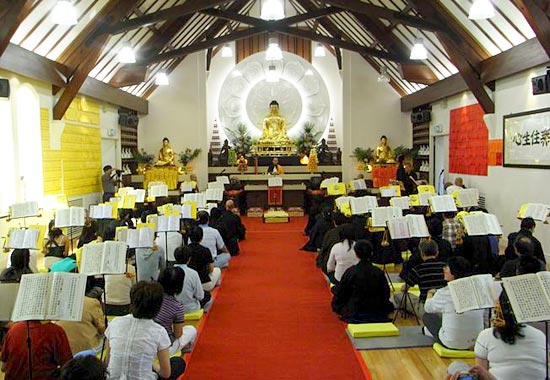The Way is practiced in this alluring world and busy city.
It relies on the Five Precepts as its foundation.
The Five Precepts are guidelines to a correct and moral way of life that will free us from future suffering and lead us to happiness and peace. Upholding the Five Precepts is a prerequisite for being reborn in the human realm. Whether we are born rich or poor, sickly or healthy, smart or stupid, attractive or homely, tall or short depends on the degree of purity with which we observe the Five Precepts.
No Killing: Refrain from abortion, killing or harming human beings or any sentient beings, such as animals, birds, or insects. The karmic consequence of killing is a shortened life span and illness.
No Stealing: Refrain from taking things away from others without permission, or getting things using deceit, force or any improper means. The karmic consequence of stealing is poverty.
No Sexual Misconduct: Refrain from improper sexual behavior, such as promiscuity and adultery. Unrestrained lust can cause much harm and heartache to oneself and those involved.
No Lying: Refrain from deceitful and false speech, slandering, gossiping, or foul language. Lying results in the loss of trust and friendship of others.
No Intoxicants: Refrain from taking alcohol, drug or any illegal substances which delude and muddle the mind. The karmic consequence of intoxication is ignorance.
If we uphold one of the Five Precepts, we will be protected by five guardian spirits. If we uphold all of the Five Precepts, we will be protected by twenty-five guardian spirits. If we uphold the precepts mindfully and sincerely, we will achieve greatness in this world, and enjoy great wealth and reputation. If we uphold the precepts adequately, we will get ordinary wealth and status. If we uphold the precepts poorly, we will still be guaranteed our human form. However, if we uphold the precepts in the poorest acceptable level, we will be reborn as a human being with missing faculties.
The Five Precepts are the foundations of all virtues. We must seize the opportunity of this lifetime to observe the precepts, and liberate ourselves from the suffering of samsara, the birth and death cycle.

